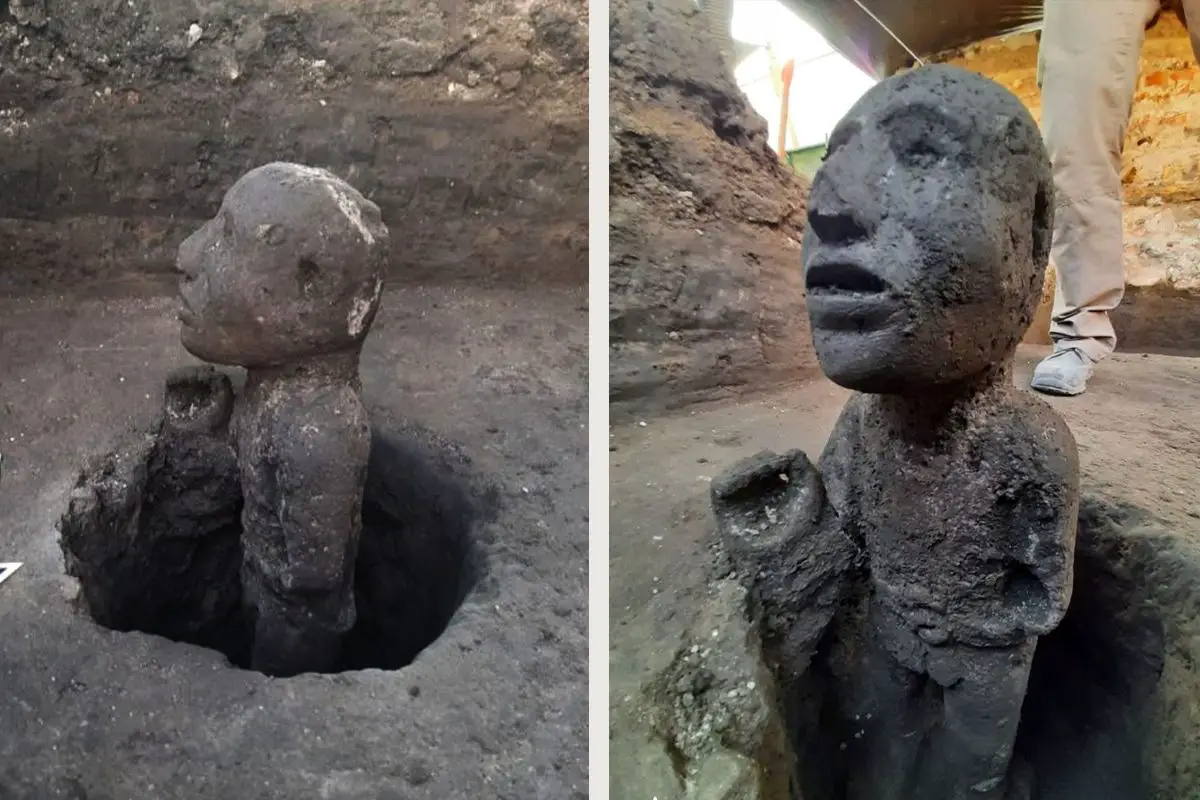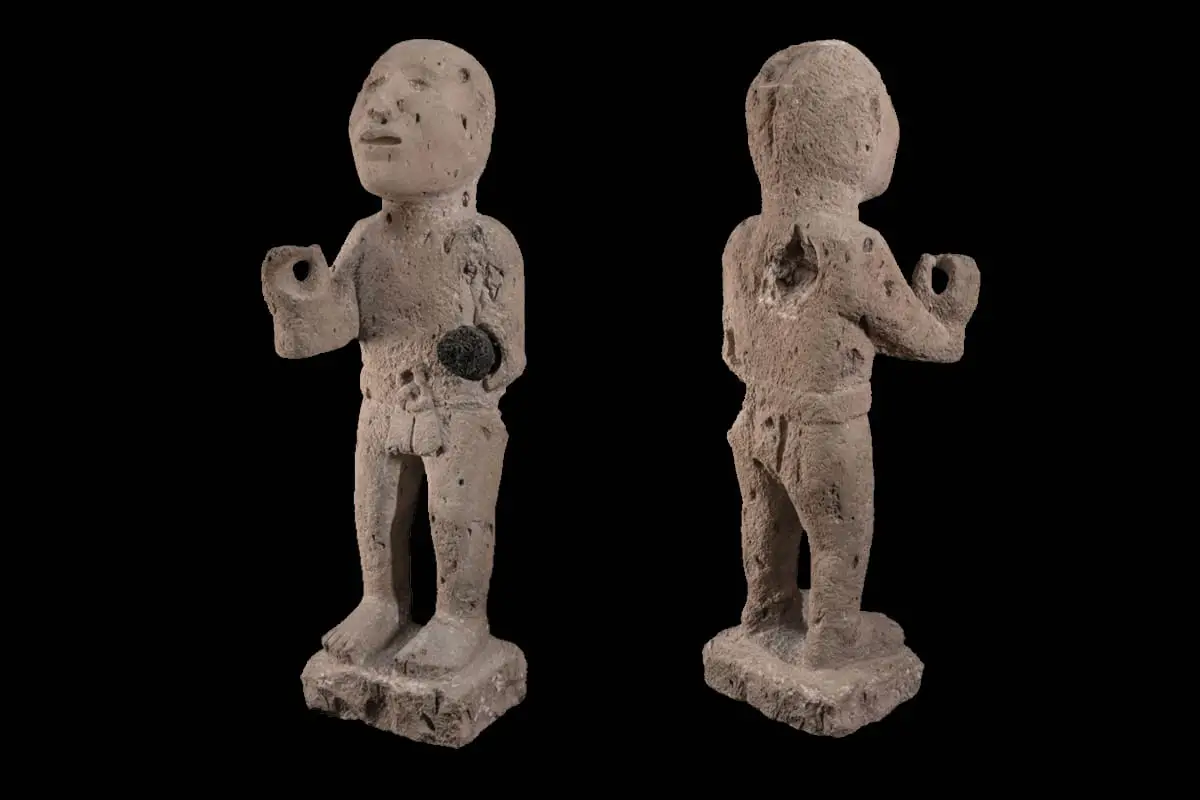A statue discovered in the Moyotlan neighbourhood of Tenochtitlan has been unveiled at the Templo Mayor Museum (MTM) in Mexico City.
Moyotlan – meaning “place of the mosquito” in Nahuatl, was a camp (zone) of the Aztec capital of Tenochtitlan. The city was divided into four camps: Moyotlan, Teopan, Atzacualco, and Cuepopan, centred on the ceremonial centre where the public buildings, palaces and temples, including the Templo Mayor were situated.
The discovery was made in 2022, when archaeologists were excavating on Delicias street, in the Historic Centre of Mexico City during public works for the Buen Tono Substation.
The statue measures 69 cm’s in height and is an anthropomorphic work from the Late Postclassic period (AD 1200-1521), that may be a representation of the Aztec deity, Xipe Tótec, “Our Lord the Flayed One”. Xipe Tótec was known by many names, including Tlatlauhca, Tlatlauhqui Tezcatlipoca, Yohuallahuan, and Yaotzin.
Xipe Tótec was a life-death-rebirth deity, god of agriculture, vegetation, the east, spring, goldsmiths, silversmiths, liberation, and the seasons. Xipe Totec was believed by the Aztecs to be the god that invented war and is often depicted as being red beneath the flayed skin he wears, likely referencing his own flayed nature.

The Aztecs made human sacrifices to Xipe Tótec, where sacrificial victims were flayed and had their hearts cut out, or the victim was cast into a firepit and burned, while others had their throats cut.
A closer study revealed that the statue is sculpted from andesite, a volcanic rock of intermediate composition between silica-poor basalt and silica-rich rhyolite with a high degree of quartz. The right arm of the statue is in a launching position, while a nail carved in black tezontle on the left arm would originally have held a shield called a chimalli.
Archaeologists found the statue beneath three layers of adobe floors, which may have been hidden by the indigenous people who survived the Spanish conquest of Tenochtitlan in AD 1521.
Excavations within the Moyotlan area also revealed the remains of residential structures, human burials, ceramics and funerary urns, as well as evidence of canals, chinampas farming, and a pier.
Header Image Credit : National Institute of Anthropology and History





